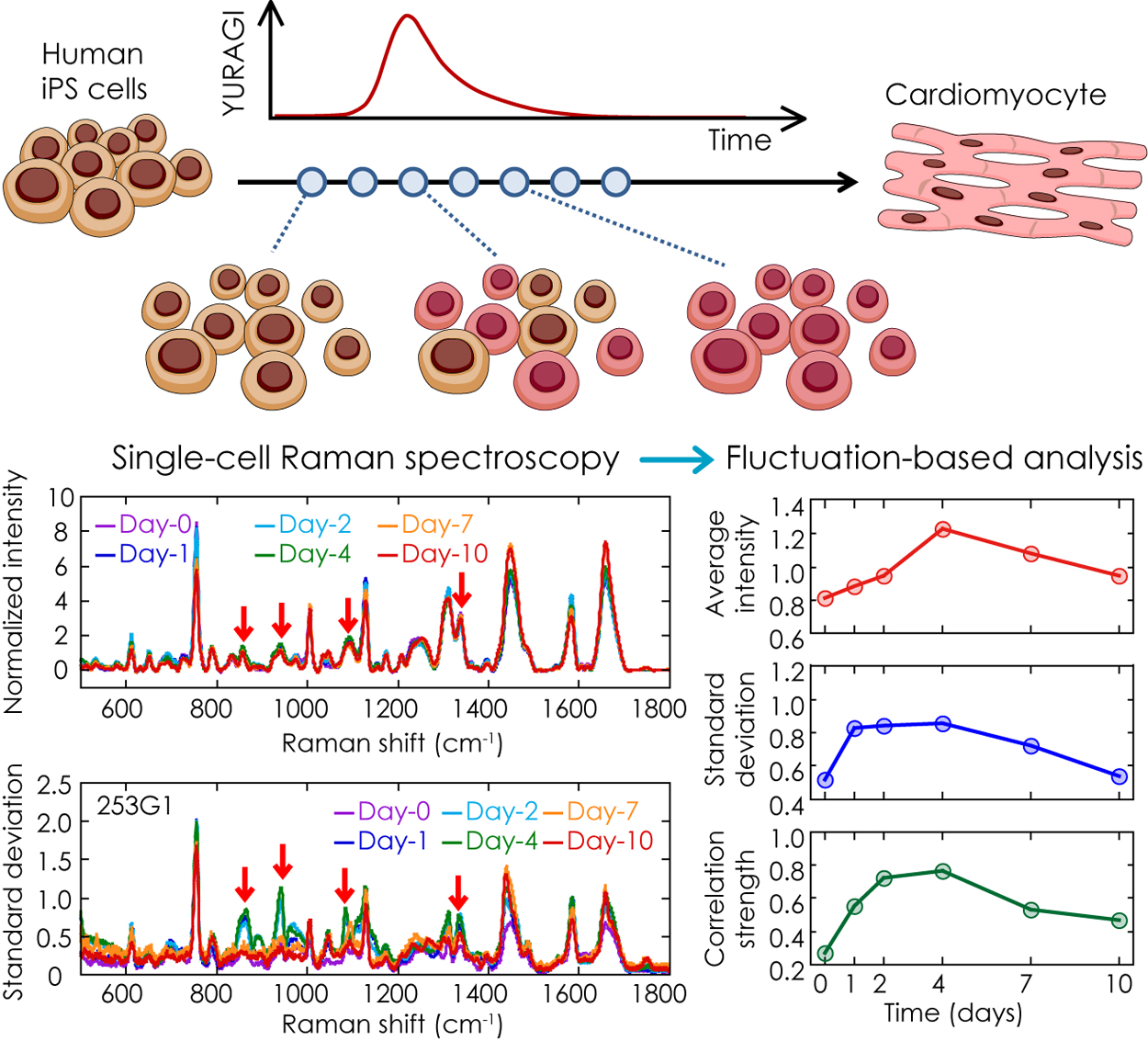1
"Yuragi biomarker concept for evaluating human induced pluripotent stem cells using heterogeneity-based Raman finger-printing" by Hideaki Fujita, Takayuki Haruki, Kazuhiro Sudo, Yumiko Koga, Yukio Nakamura, Kuniya Abe, Yasuhiko Yoshida, Keiichi Koizumi, Tomonobu M Watanabe is published in BPPB as the J-STAGE Advance Publication.
2024 March 22 BPPB
A following article is published as the J-STAGE Advance Publication in "Biophysics and Physicobiology".
Hideaki Fujita, Takayuki Haruki, Kazuhiro Sudo, Yumiko Koga, Yukio Nakamura, Kuniya Abe, Yasuhiko Yoshida, Keiichi Koizumi, Tomonobu M Watanabe
"Yuragi biomarker concept for evaluating human induced pluripotent stem cells using heterogeneity-based Raman finger-printing"
URL:https://doi.org/10.2142/biophysico.bppb-v21.s016
- Abstract
- Considering the fundamental mechanism causing singularity phenomena, we performed the following abduction: Assuming that a multicellular system is driven by spontaneous fluctuation of each cell and dynamic interaction of the cells, state transition of the system would be experimentally predictable from cellular heterogeneity. This study describes the assessment of this abductive hypothesis by investigating whether analysis of cellular heterogeneity to distinguish pre-state of state transition of differentiating cells by using Raman spectroscopy and human induced pluripotent stem cells (hiPSCs) technique. Herein, we investigated the time development of cellular heterogeneity in Raman spectra during cardiomyogenesis of six hiPSC lines and tested two types of analyses for heterogeneity. As expected, some spectral peaks, attributed to glycogen, correctively exhibited higher heterogeneity, prior to intensity changes of the spectrum in the both analyses in the all cell-lines tested. The combination of spectral data and heterogeneity-based analysis will be an approach to the arrival of biology that uses not only signal intensity but also heterogeneity as a biological index.





